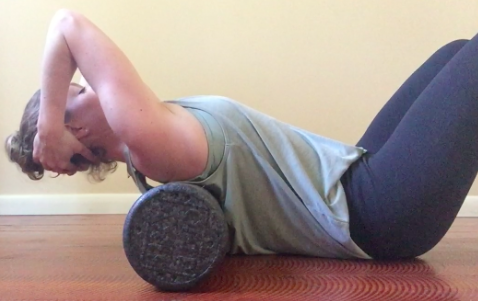The importance of the thoracic spine
Limited thoracic spine (mid + upper back) range of motion can have negative effects on the mechanics of the shoulder, neck and low back. And, while good upper back mobility is crucial for other areas of the body to move correctly, it’s often overlooked.
Additionally, many of the postures you’re in on a daily basis (i.e. sitting) aren’t doing your upper back any favors!
Upper back mobility is extremely important for activities and sports that require overhead reaching or lifting and trunk rotation. Swimming, golfing, kayaking and tennis are a few examples.
The impact of upper back mobility on breathing
If you’re an average person, you take about 23,000 breaths per day. And, good thoracic mobility is necessary to make those breaths efficient and effective! If you’re thoracic spine doesn’t move well, it’s more difficult for your ribs to move well, making respiration more challenging.
Linking upper back mobility with neck, shoulder and back pain
Limited upper back mobility often plays a role in neck pain, shoulder pain and low back pain. Give the following exercises a try and talk to your physical therapist (or message me) about how hands-on treatment can improve upper back mobility even further.
Each of these exercises should be performed for 10-15 repetitions (on both sides for the rotation exercises) 3-4 times a week.
Send me a message and let me know how these exercises have worked for you! amy@momentumptmt.com
Share this Post

